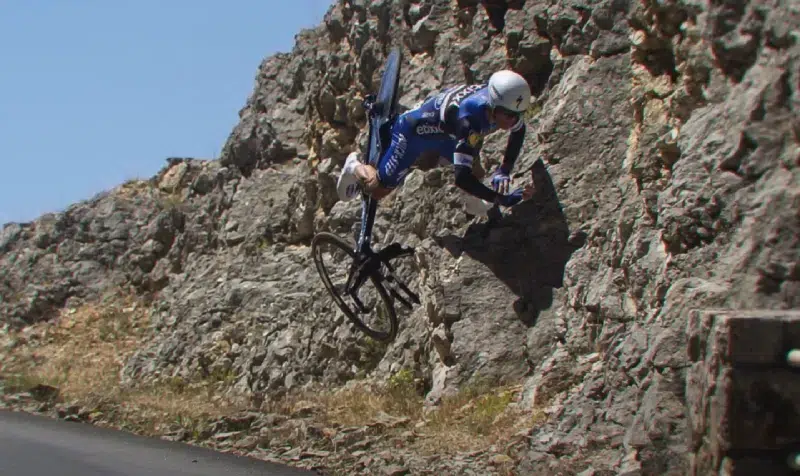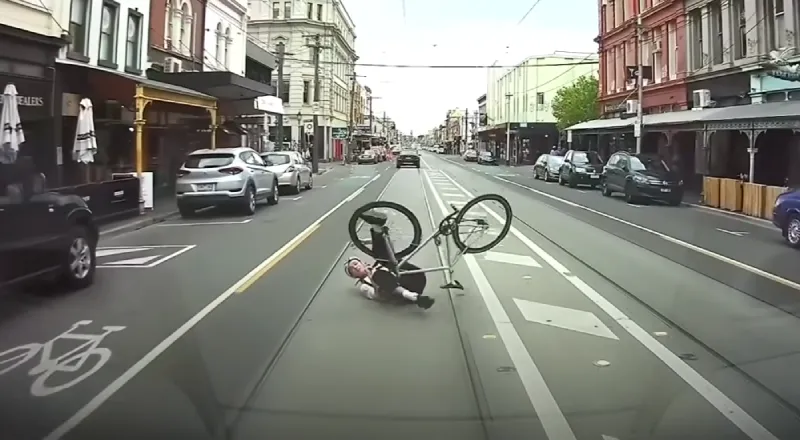Cyclists frequently face the expected risk of head injuries. One out of every three non-fatal injuries sustained by cyclists is a head injury, leading to approximately 80,000 head injuries treated in emergency rooms each year.
After hitting your head while cycling, you should not SLEEP. You should stay awake for 2 or 3 hours. You must keep someone with you for 12 to 24 hours. This helps ensure early detection of concerning symptoms.
In this blog post, Delving into cycling-related head injuries, focusing on concussions and educating you on their prevalence, risks, and effective management and covering from immediate aftermath to recovery.
What Is Traumatic Head Injury For Cyclist: 5 Factors

Experiencing a head injury while cycling can be alarming. It is crucial to know the first steps to take following such an incident, debunk common myths about staying awake, and be aware of the symptoms that may arise in the initial 24-48 hours.
Debunking the Myth of Staying Awake
There’s a common belief that you should keep someone awake after they’ve hit their head. However, this isn’t necessarily the best advice:
- The Truth: Medical professionals advise against forcefully keeping someone awake after a head injury. Instead, monitoring them for new or worsening symptoms is crucial.
- Rest Is Important: Rest plays a key role in recovery from any injury, including concussions. The critical factor is to observe for any changes in condition.
First Steps After a Cycling Head Injury
Suppose you or someone else hits your head while cycling. Immediate action can significantly affect the outcome. Here’s what you should do right away:
- Stop Cycling: Cease all physical activity and carefully assess the situation.
- Safety First: Move to a safe location in a potentially dangerous area.
- Check for Injuries: Observe any injuries on the head or elsewhere.
- Seek Medical Attention: Whatever the injury appears, it’s important to get checked by a healthcare provider as soon as possible.
Symptoms to Watch in the First 24-48 Hours
The symptoms following a head injury can vary widely from person to person. Here are some signs to be vigilant about during the first two days:
- Headaches: A common symptom but should not be ignored if it worsens.
- Confusion or dizziness: Any mental status or balance changes should be taken seriously.
- Nausea or vomiting: These symptoms can show a more severe injury.
- Sleep Disturbances: Difficulty sleeping or sleeping more than usual can indicate a concussion.
- Sensitivity to Light or Noise: Increased sensitivity can be a concussion symptom.
Head Injury for Cyclists: Diagnosis and Treatment

When a cyclist hits their head, knowing the steps for proper diagnosis and treatment is crucial. Concussions are not always visible, so it’s important to understand how healthcare professionals determine if someone has a concussion and what treatments are recommended.
How Are Head Injuries Diagnosed?
After a cycling accident, if there’s any suspicion of a concussion, the next step is getting a proper diagnosis. Here’s how it’s done:
- Medical Check: Doctors will first ask about any symptoms you’re experiencing, such as headaches, dizziness, or trouble remembering.
- Physical Exam: A detailed examination helps check your balance, coordination, and reflexes.
- Cognitive Tests: You might be asked to perform tasks that assess your thinking, memory, and concentration skills.
- Imaging Scans: In some cases, doctors may use CT scans or MRIs to look more closely at the brain. However, these are not always necessary for a concussion diagnosis.
Treatment Strategies for Concussions
Once diagnosed with a concussion, the treatment plan focuses on recovery and preventing further injury:
- Rest is Key: Initially, rest (both physical and mental) is the most essential part of recovery. This means taking it easy and avoiding activities that could strain your brain, like heavy exercise or tasks requiring much concentration.
- Gradual Return to Activity: You’ll slowly do more activities after some rest. It’s important to increase the difficulty level gradually and only move forward if you don’t experience any worsening symptoms.
- Medications: Some symptoms, like headaches, can be managed with over-the-counter pain relievers. Always consult with a healthcare provider before taking medication.
- Follow-Up Care: Regular check-ins with your doctor are essential to monitor your recovery and adjust the treatment plan.
Navigating the Path to Recovery After a Cycling Concussion
Recovering from a concussion sustained while cycling isn’t a one-size-fits-all process. To safely get back to the sport you love, it’s key to understand the recovery timeline, why each recovery plan is unique, and the importance of balancing rest with your eagerness to cycle again.
Decoding the Concussion Recovery Timeline
Every cyclist’s experience with concussion recovery will differ, but here’s a general outline of what to expect:
- Initial 24-48 Hours: The first two days are crucial for monitoring symptoms. This period often involves the most rest.
- First Week: Many people felt better but might still experience some symptoms.
- Two to Four Weeks: Gradual improvement is typical, with many returning to daily routines.
- One Month and Beyond: Some may have lingering symptoms that require ongoing management.
Prevention of Future Head Injuries

Protecting yourself from future concussions is just as important as recovering from the current one. Here are some tips to reduce your risk:
- Wear a Helmet: Helmets that meet safety standards should always be worn.
- Be Visible: Use lights and wear reflective gear, especially if riding in low-light conditions.
- Ride Defensively: Pay attention to your surroundings and anticipate the actions of others, especially in traffic.
- Improve Your Skills: Regularly practice cycling skills, such as braking, turning, and obstacle avoidance, to enhance your control and safety on the bike.
Conclusion
We’ve covered the immediate steps following a head injury while cycling and dispelled the notion that staying awake is a necessary post-accident.
However, the journey doesn’t end there. It’s crucial to recognize symptoms within the critical first 24-48 hours and comprehend the diagnosis and treatment of concussions.
Remember, the path to recovery may feel lengthy, but it hinges on finding equilibrium – balancing mental and physical rest with the eagerness to resume cycling.
Let’s commit to prioritizing safety and awareness so that we can continue enjoying our rides without jeopardizing our well-being. I wish everyone safe cycling adventures.
FAQs
Can You Go To Sleep After Hitting Your Head?
Resting after a head injury isn’t always risky, but caution is advised. Sleep aids the brain in recovering from a concussion. Yet vigilance is vital for spotting signs of severe brain trauma like seizures, weakness, or confusion. Sleep is safe if the individual is alert, coherent, and devoid of concussion indications. Challenges with falling or staying asleep post-head injury may occur for some.


